Reading a guidebook on visiting a Mayan ruins can be a daunting exercise. The mythology is complex, the names of the rulers are whimsical and downright bizarre and the structures of the ruins are given a mix of numbered and alphabet sequences. Having visited the Mayan sites in Chipas, Mexico a few years ago, we had a reasonable familiarity with the broad themes, a few familiar characters (Chacmool, Chaac, Tlaloc) whose repeated appearances across a few of the ruin sites helped us get warmed to the Mayan mythology. We did not get too deep into the intricacies of the many Mayan calendars.
We had visited Palenque, Bonampak and Yaxchilan (Chiapas) and Chichen Itza, Uxmal and other sites on the Ruta Puuc in the Yucatan a few years ago. We had flirted with the idea of crossing into Guatemala to visit Tikal but had wisely given it up for a future date due to potential visa complications. On this trip we hoped to continue in our explorations into the fascinating world of the Maya.
First, Copan. Its size (>24000 inhabitants during its heyday) does not compare with that of Tikal (> 100000 residents at its zenith) but during its 400 years as the principal Mayan cultural center it was far ahead of the other Mayan cities in its development of sculpture, astronomy and hieroglyphics.
The history of those 400 years has still not been fully deciphered but archeologists have made great advances in recent years with breakthroughs in deciphering the hieroglyphs and the discovery of tombs in Copan. Earlier theories are being replaced with newer ones based on newer revelations. Due to the Mayan tradition of destroying or building over the temples of previous rulers, detailed information is difficult to obtain.
In order to obtain the most optimal experience of the ruins without getting bogged down by technical details, we focused on a few broad areas of interest: The Rulers and their constructions, a high level layout of the ruins with a few highlights mentioned in the guidebooks. We are not going to bore you with the details, but reading the brief summary below will help your understanding of the significance of the dynasty and their achievements.
16 rulers reigned from 426 AD to 776 AD, starting with the founder Yax K'uk Mo' and ending with Yax Pac. The important rulers were Moon Jaguar (10th ruler) whose reign (553 AD) was the height of the Royal Dynasty. He built the Rosalila temple (discovered in 1989 buried under another structure). The 12th ruler Smoke Imix is mentioned a lot, not unsurprisingly given that he reigned for 68 years. His successor 18 Rabbit was also a prolific builder but his tragic beheading in 738 AD weakened the dynasty and later rulers Smoke Monkey, Smoke Shell etc. could not govern with confidence. The reason for the collapse of the kingdom is still not universally agreed upon but the most plausible explanation is that environmental factors and population growth caused it. The Rio Copan valley experienced droughts, deforestation, massive soil erosion and sudden floods. This compounded with the Mayan slash-and-burn agricultural practices may have led to an unsustainable situation. The population dwindled gradually and only a few small village groups were left to be found by the Spanish when they entered the valley in 1524.
Part 1: The main complex
The Acropolis - A massive complex of high structures consisting of the West Court and East Court separated by Structure 16 (under which the glorious Rosalila temple was discovered). Highlights include Altar Q which is a square sculpture depicting all 16 rulers of the dynasty and was built by the last, Yax Pac and it shows a baton being passed from the first ruler to the last. Until recently the 16 men were thought to be Mayan astronomers but breakthroughs in deciphering Mayan hieroglyphics have shown that these are the 16 rulers.
Video: Altar Q
Video: Stela P
The East Court, known as the Plaza de Jaguares for the pair of dancing jaguars flanking the sun god, K'inich Ahau. We had an interesting time contemplating on how a civilization came to depicting jaguars dancing, which just left us amazed. Underneath the East Court tombs were discovered in 1992-93 that were of Copan's founder and his wife. The Rosalila ("rose-lilac" for the color of the original paint) temple was also discovered recently.
Also intriguing was a building called Mat House which featured Mat patterns on its walls. Interestingly, the dancing jaguar depicted on the steps leading to the Mat House is that of Smoke Jaguar. Another curiosity is the sculpture "Old Man's Head" which is a larger-than-life figure that is believed to represent a Pawahtun, one of several deities that held up the four corners of the earth.
A colored panel depicted the ruler surveying his kingdom at the top of the Acropolis looking down at the Grand Plaza and the Hieroglyphic Stairway. The stairway is currently covered by a roof to protect it from the elements. The 72 step stairway was built in 753 by Smoke Shell to recount the history of Copan's previous rulers. Since the city was declining in prestige at that point, the stairway was shoddily made and it collapsed at some point. It was reassembled in the 1940s in random order. Computer analysis is being done by current archaeologists to re-create the correct order. The stairway contains more than 1000 glyphs.
Adjacent to the stairway is the Jugo de Pelota (Ball Court) something that is commonly seen in all Maya sites. It is thought that players bounced a hard rubber ball off the slanted walls of the court, keeping it in the air without using their hands. Only the nobility of Copan was allowed to play and it is said that if the game was political, the loser died and if it was religious, the winner died. Atop the slanted walls are three intricate macaw heads on each side - if the ball touched the ear of the macaw, the team earned a point. V could not resist turning his arm over for a bit of swing bowling owing to the slight breeze blowing through the court.
The Ball Court leads to the Great Plaza, an expansive grassy area. There is a pyramidal structure adjacent to several Stelae spaced apart from each other. Each one depicts figures and inscriptions on all 4 sides. Stela H is of particular interest which appears to depict a woman wearing jewelry and a leopard skin under her dress. She is thought to have been 18 Rabbit's wife.
Video: Stela H
The round stone next to Stela 4 has a bowl-shaped indent carved at the top which is said to be intended to collect the blood of human sacrifices.
This brought an end to the first of the three parts of our Copan explorations. As we exited the plaza, we watched the family of macaws shreiking their heads off as they went about their lives. These are from the nearby Macaw park and are being restored back to wild life in the friendly environs of Copan before being released into the wild to roam the Copan valley. We soon lost interest in the plentiful and colorful macaws and got into birding mode and chased after the elusive motmot and the commonly seen but still impressive Montezuma Oropendula.
Video: Macaws and Oropendula
Part 2: The Museo de Escultura Maya
Most of the sculptures seen on the site are replicas - the originals are kept in the breathtaking museum (similar to what has been done to the Acropolis in Athens). The museum's entrance is through a dark tunnel way opening to a hall open to the sky with the brilliantly colored Rosalila holding center stage. It has an arresting effect on the viewers as they emerge from the tunnel.
Video: Museum's Rosalila Temple
The design of the museum is intended to allow visitors to absorb and retain the information through its orientation. There are two levels of displays with bilingual panels describing the artifacts. Visiting the museum is an essential part of the Copan experience.
Part 3: Las Sepulturas ("The Tombs"). This section of the ruins is a 2km walk along the highway. It allows visitors to get a feel of the day-to-day lives of Copan's ruling elite. The ruins are not visually pleasing as the main section's are, but it is a very tranquil forested area adjacent to the Copan River and is worth the walk (or autorickshaw ride). Of particular interest to us was the structures relating to the scribes - figures depict hands holding a shell inkwell and a stylus.
Copan Photo Album Museum Photo Album

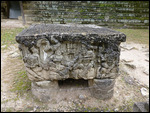
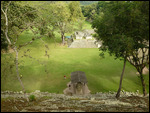


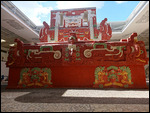
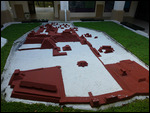

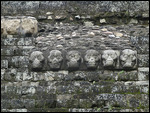
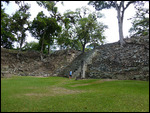
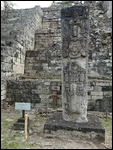
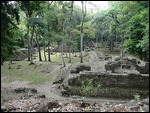
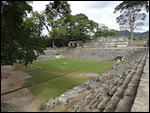

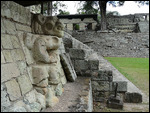
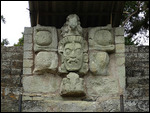
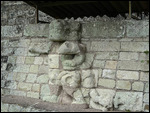
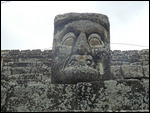

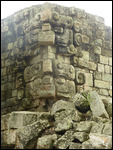
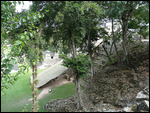

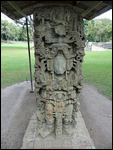

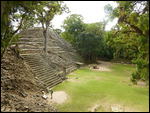
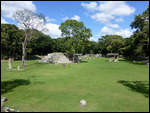
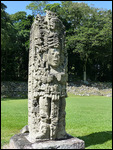
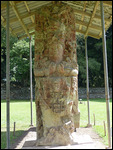

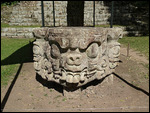
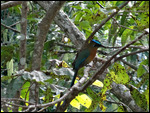

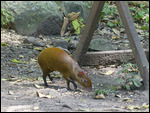
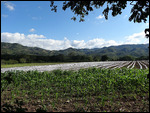
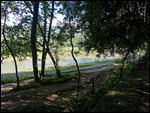
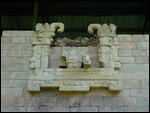
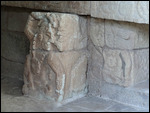



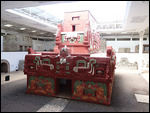
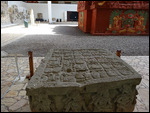
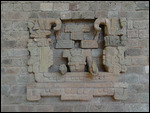
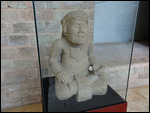
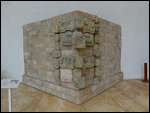
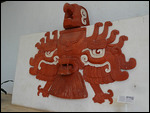


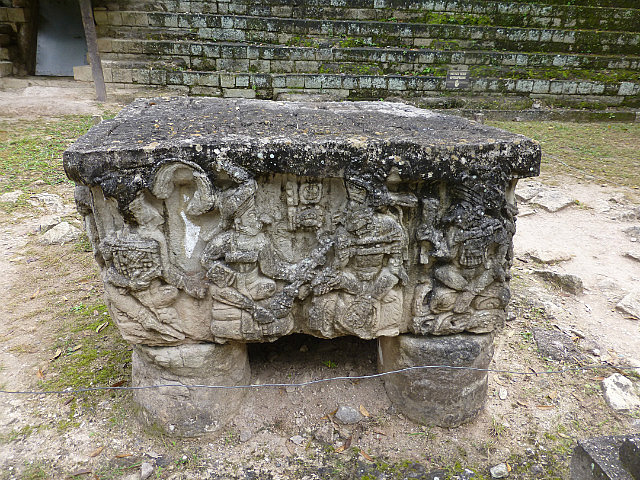
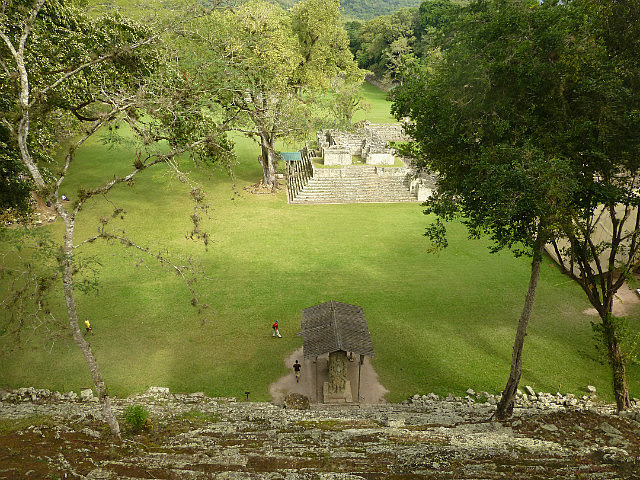
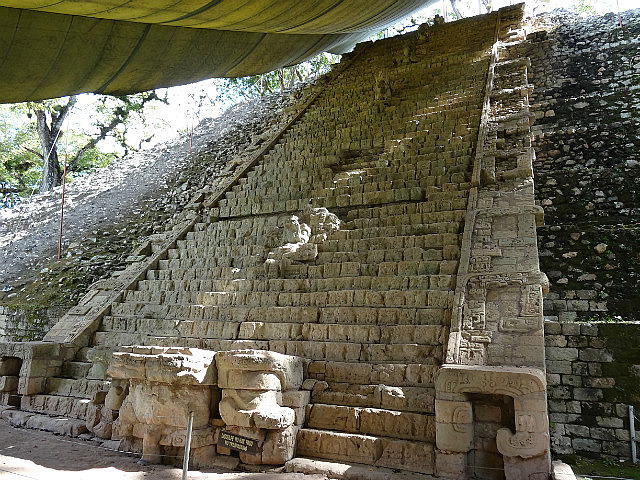

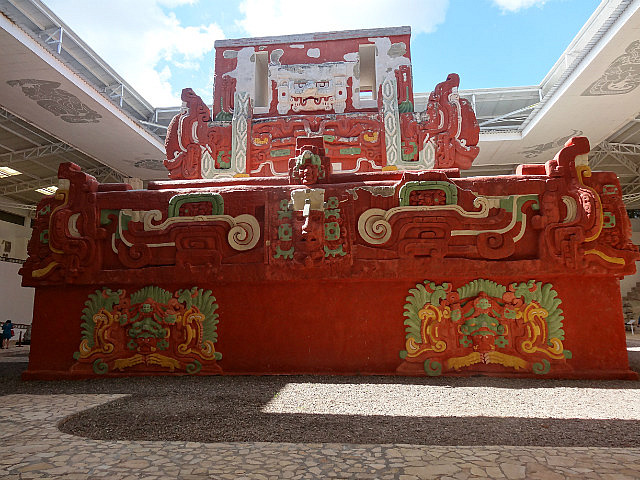
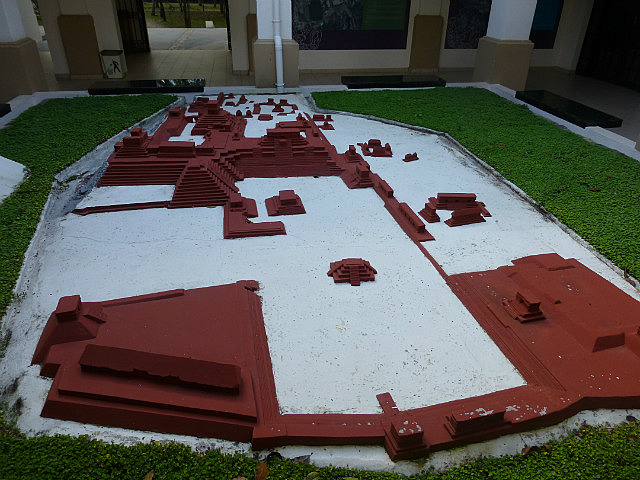

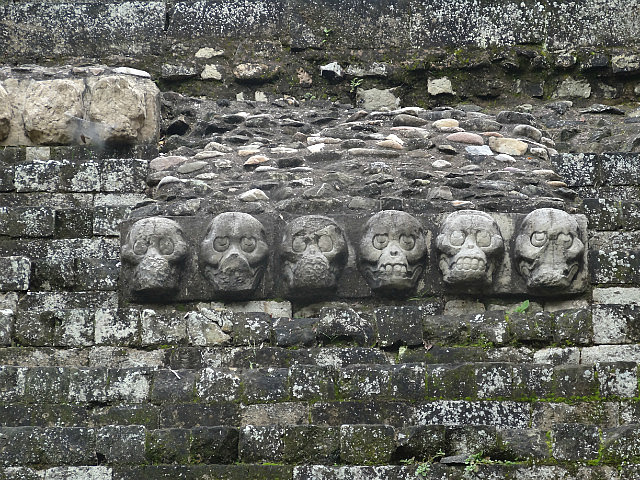

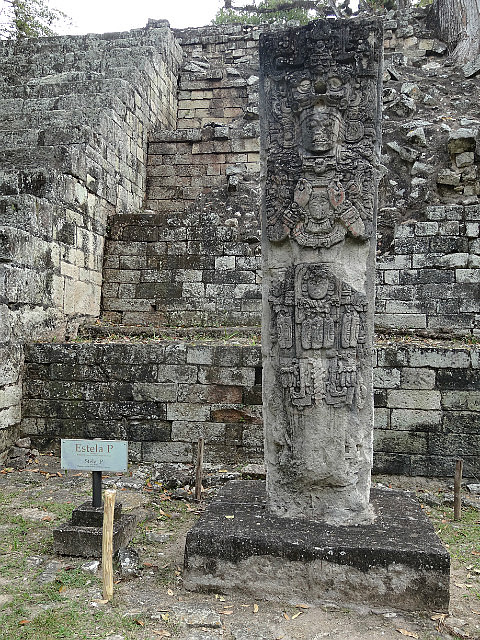

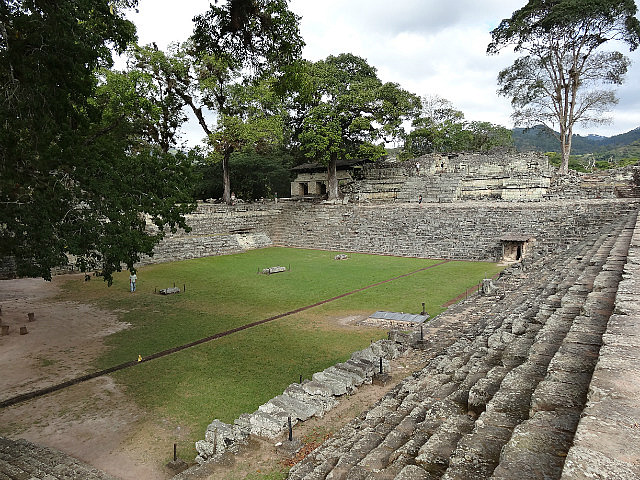
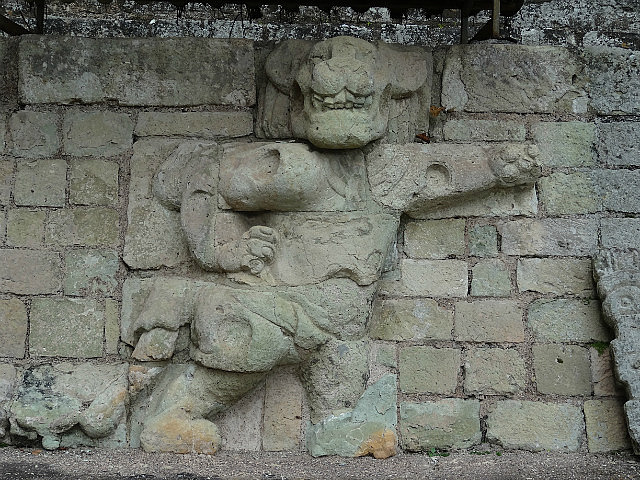
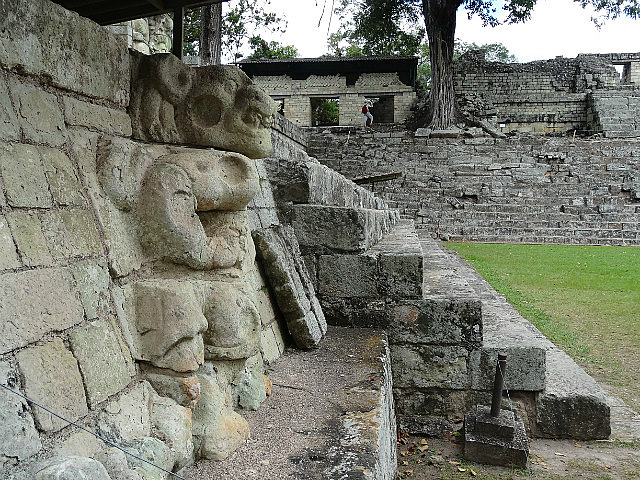
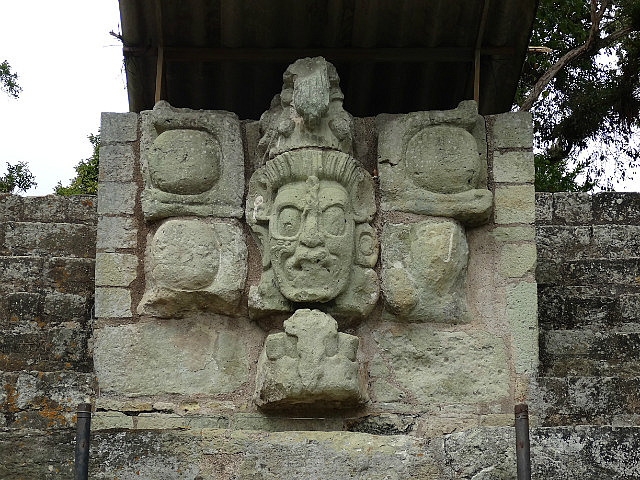
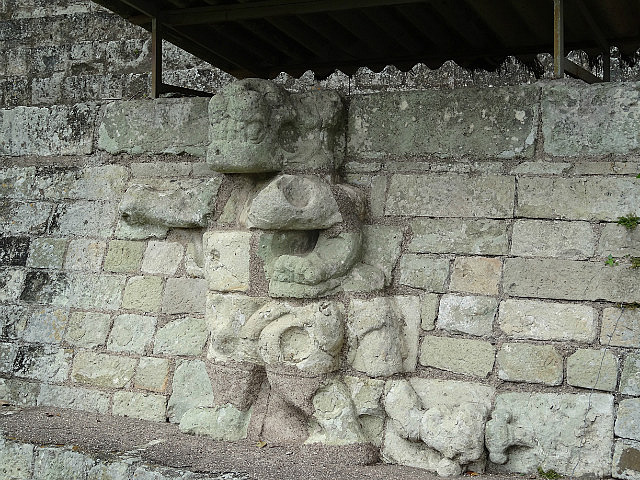

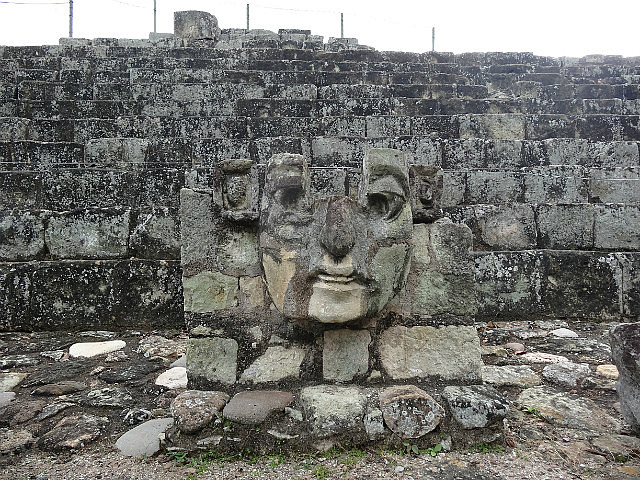

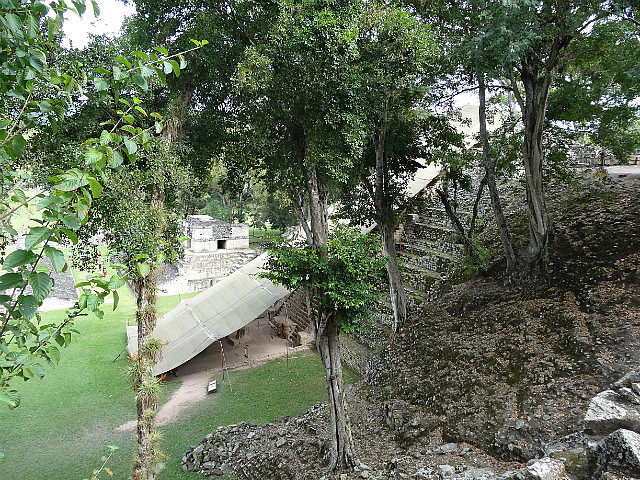
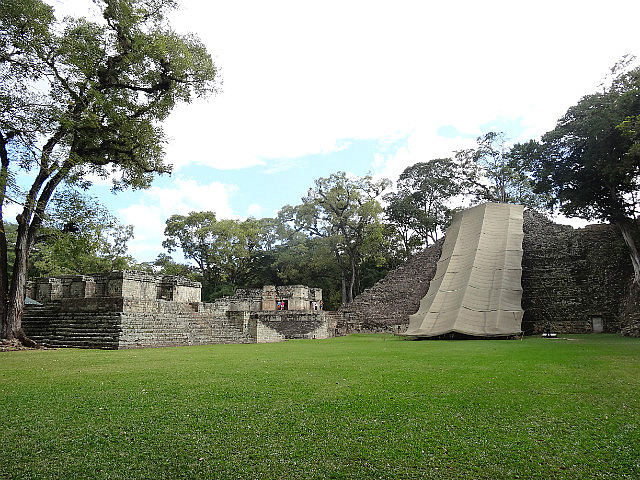
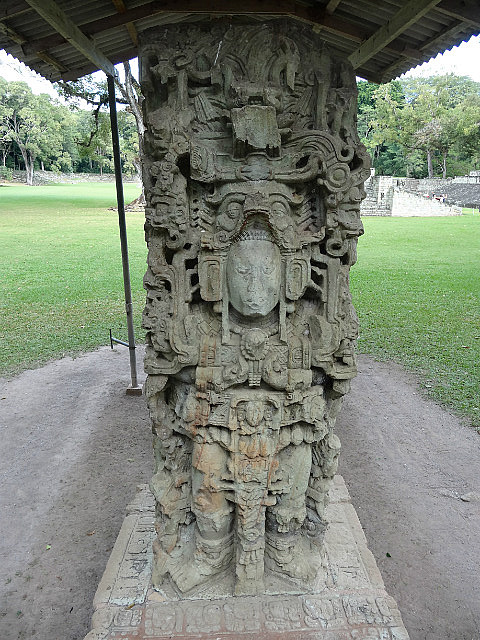
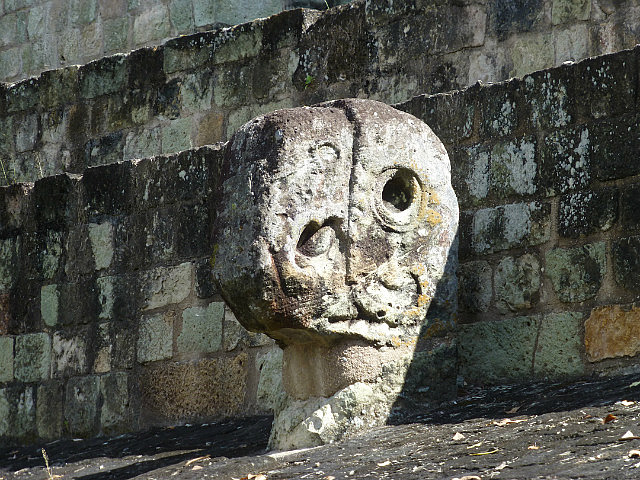
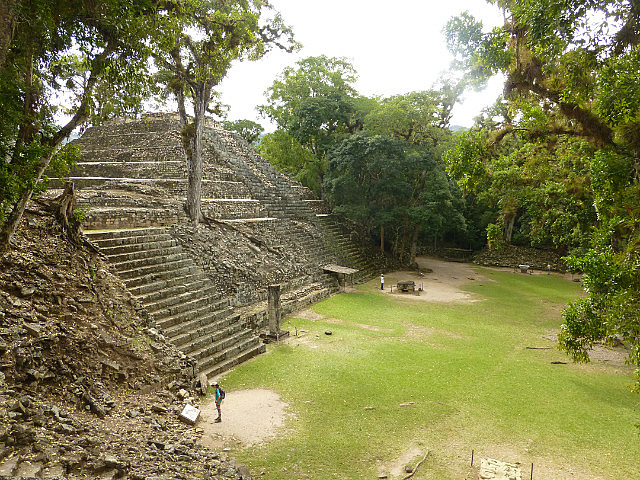
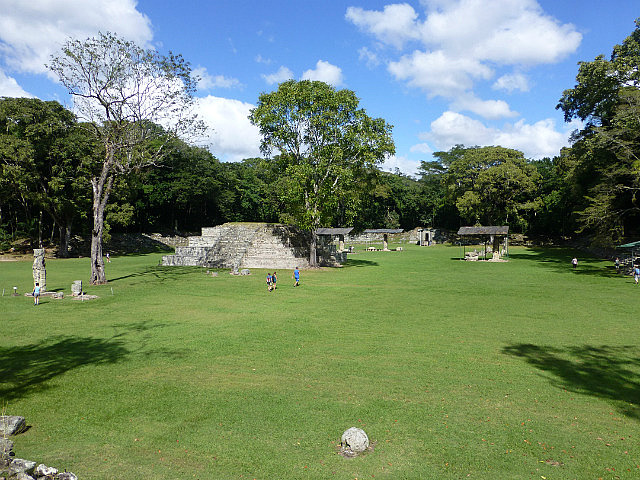

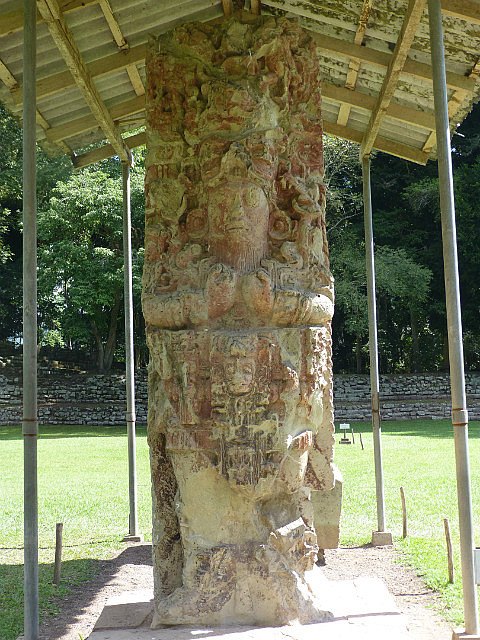
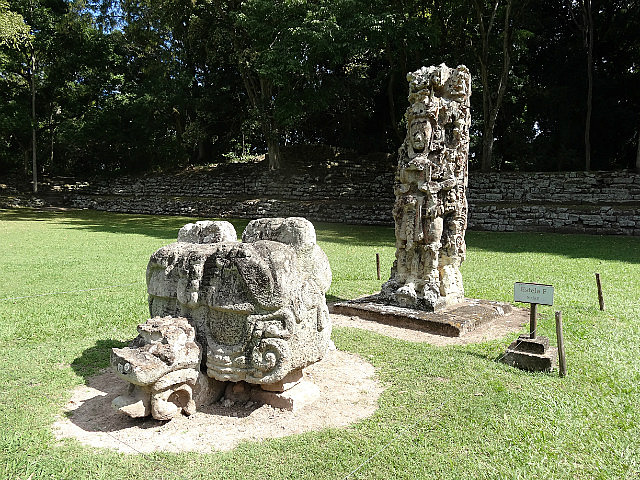
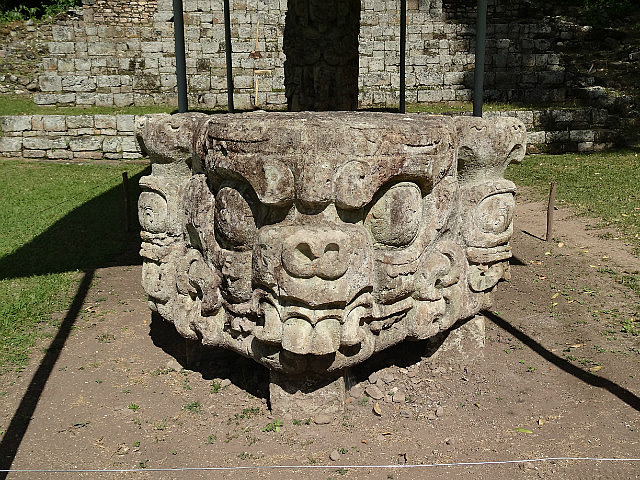
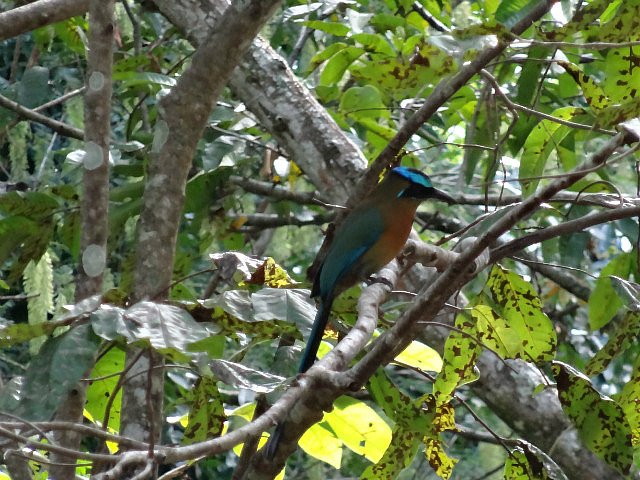
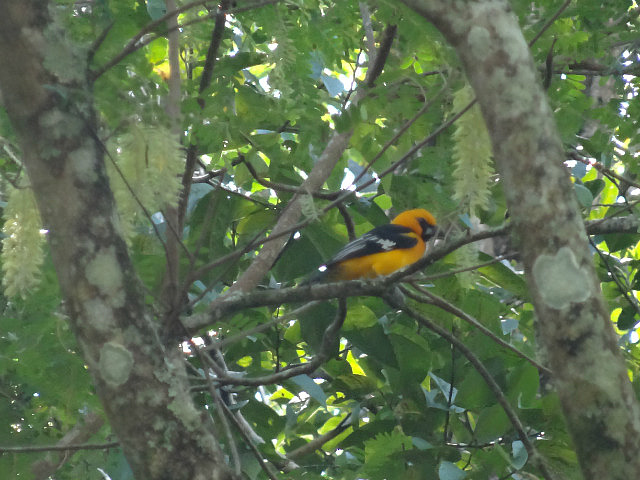
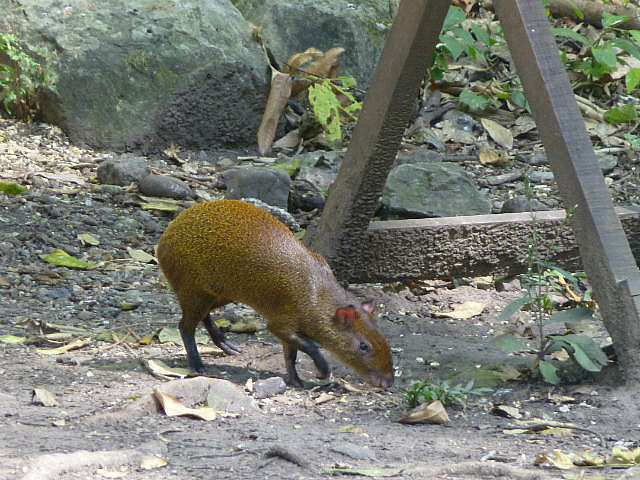


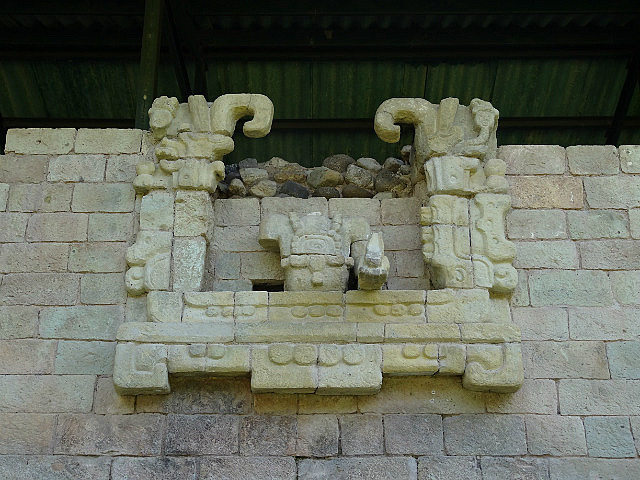
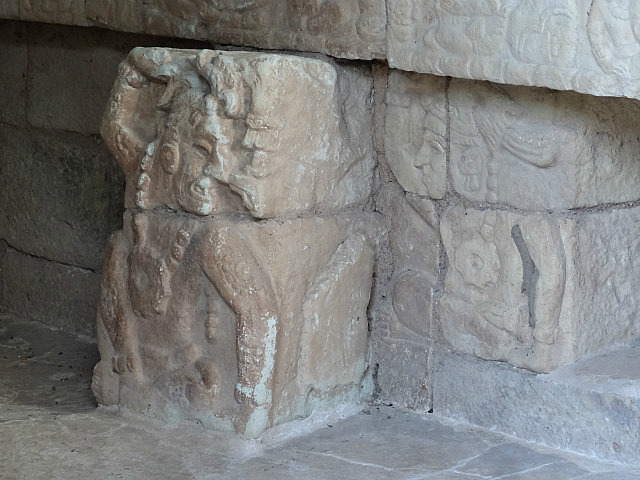
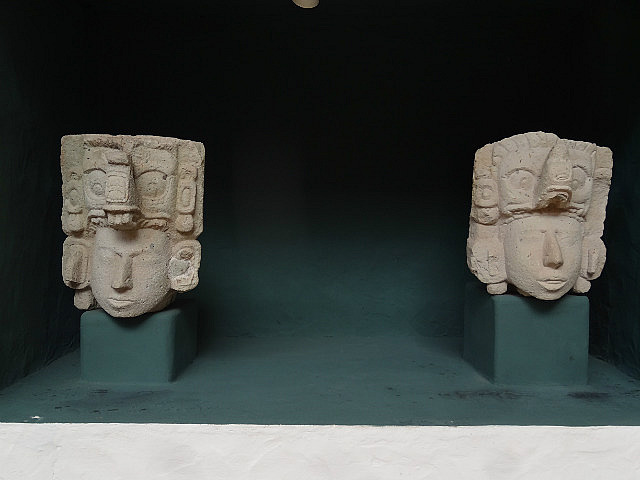

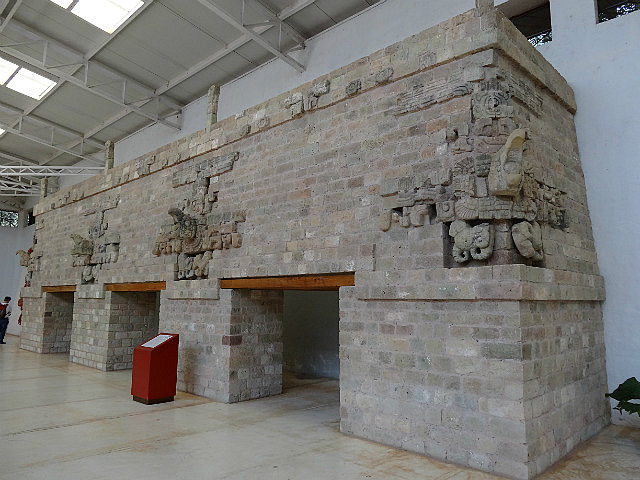
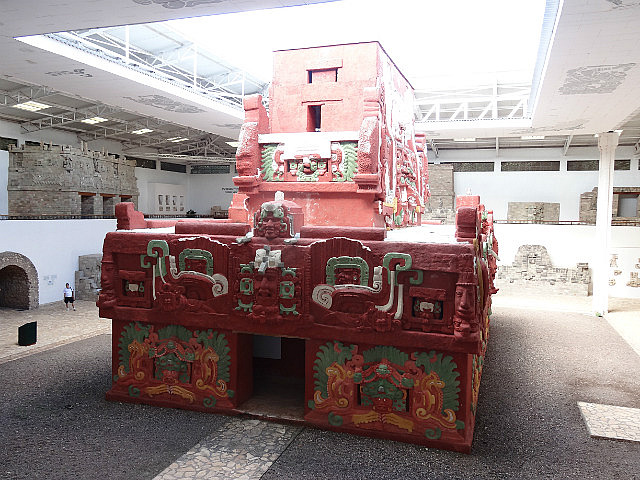
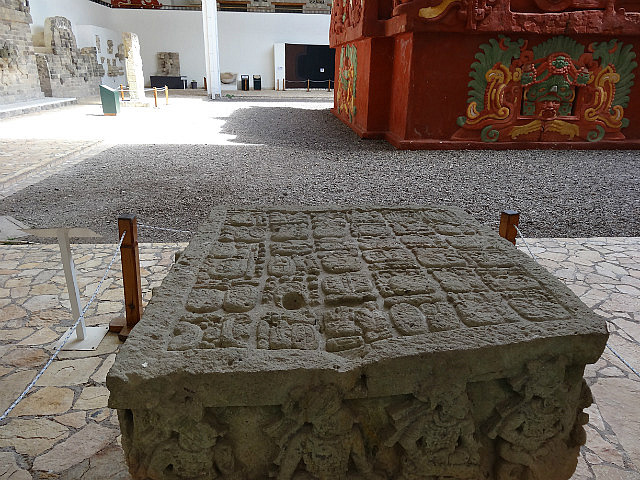

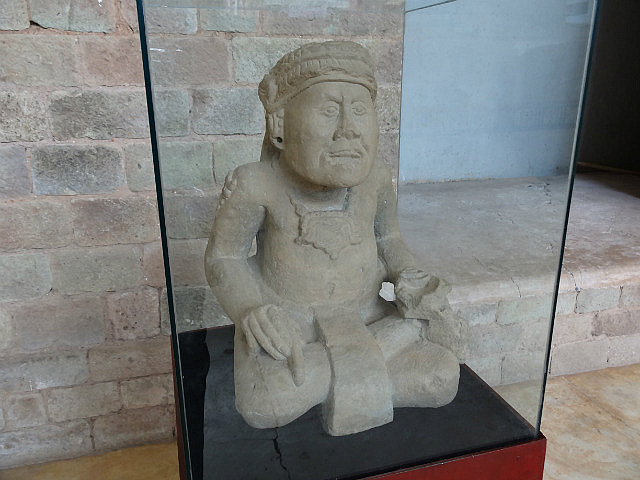
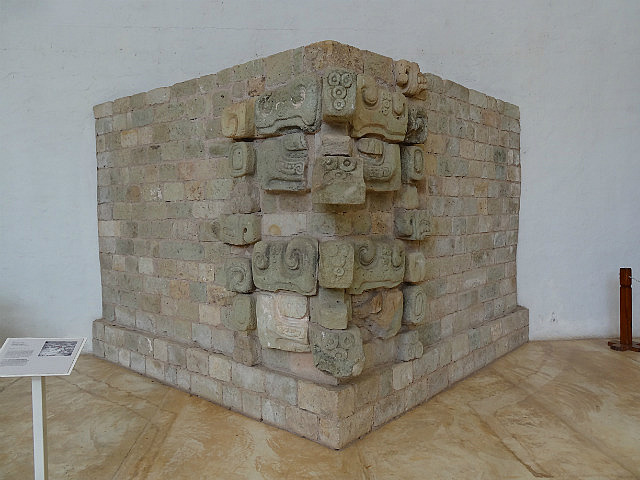

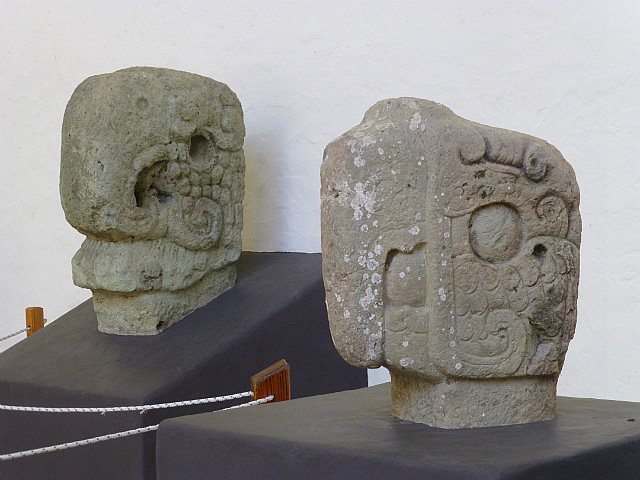
Comments